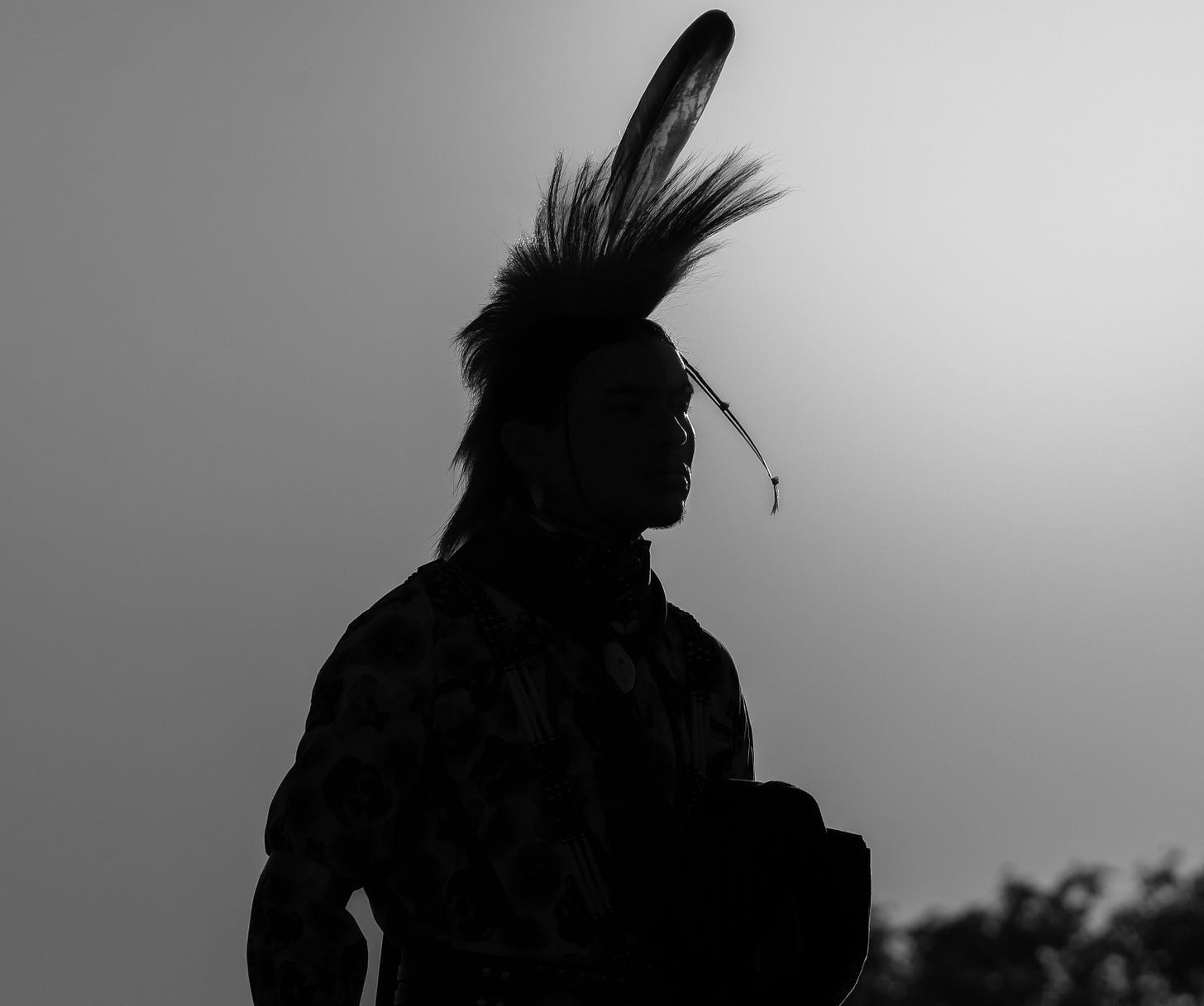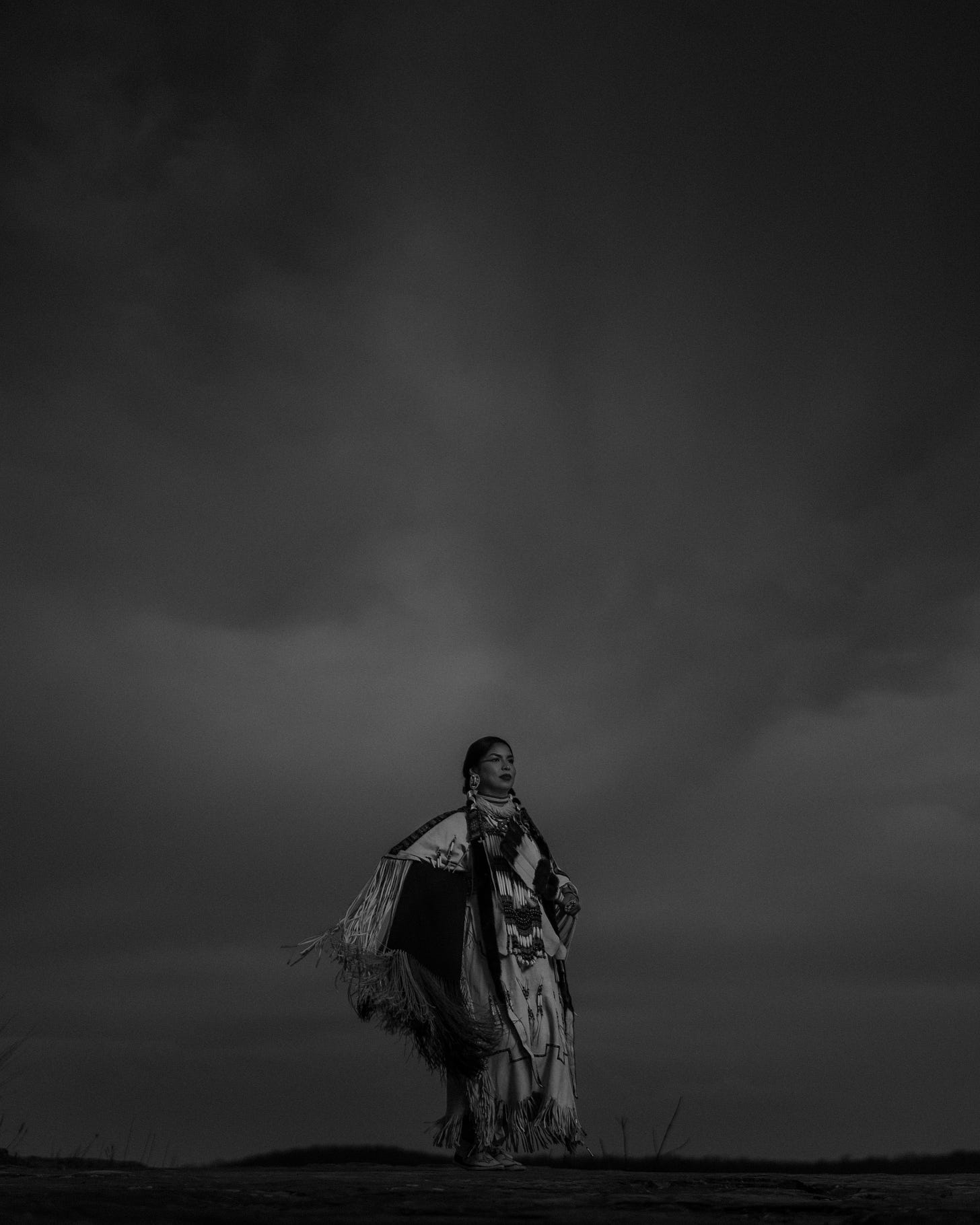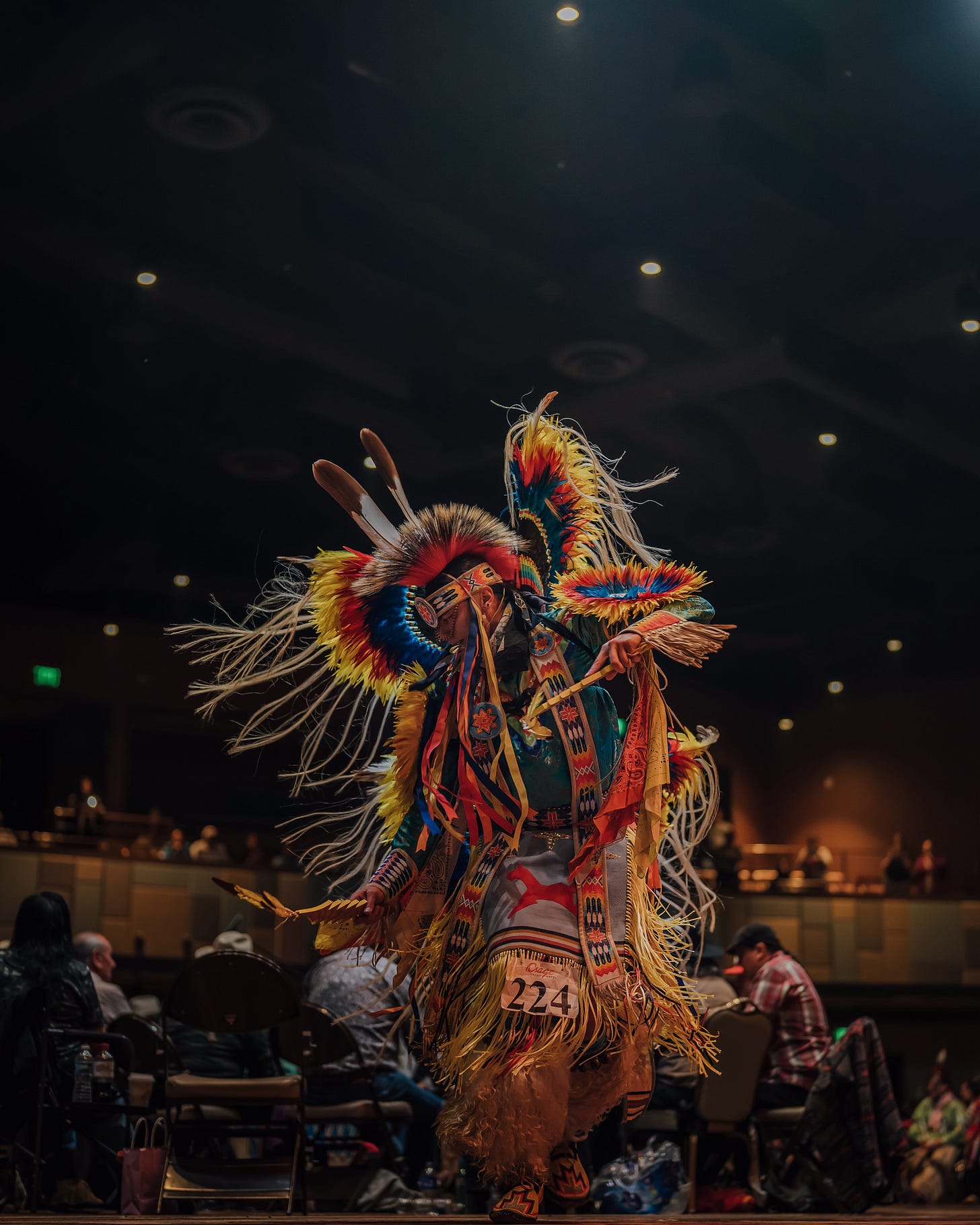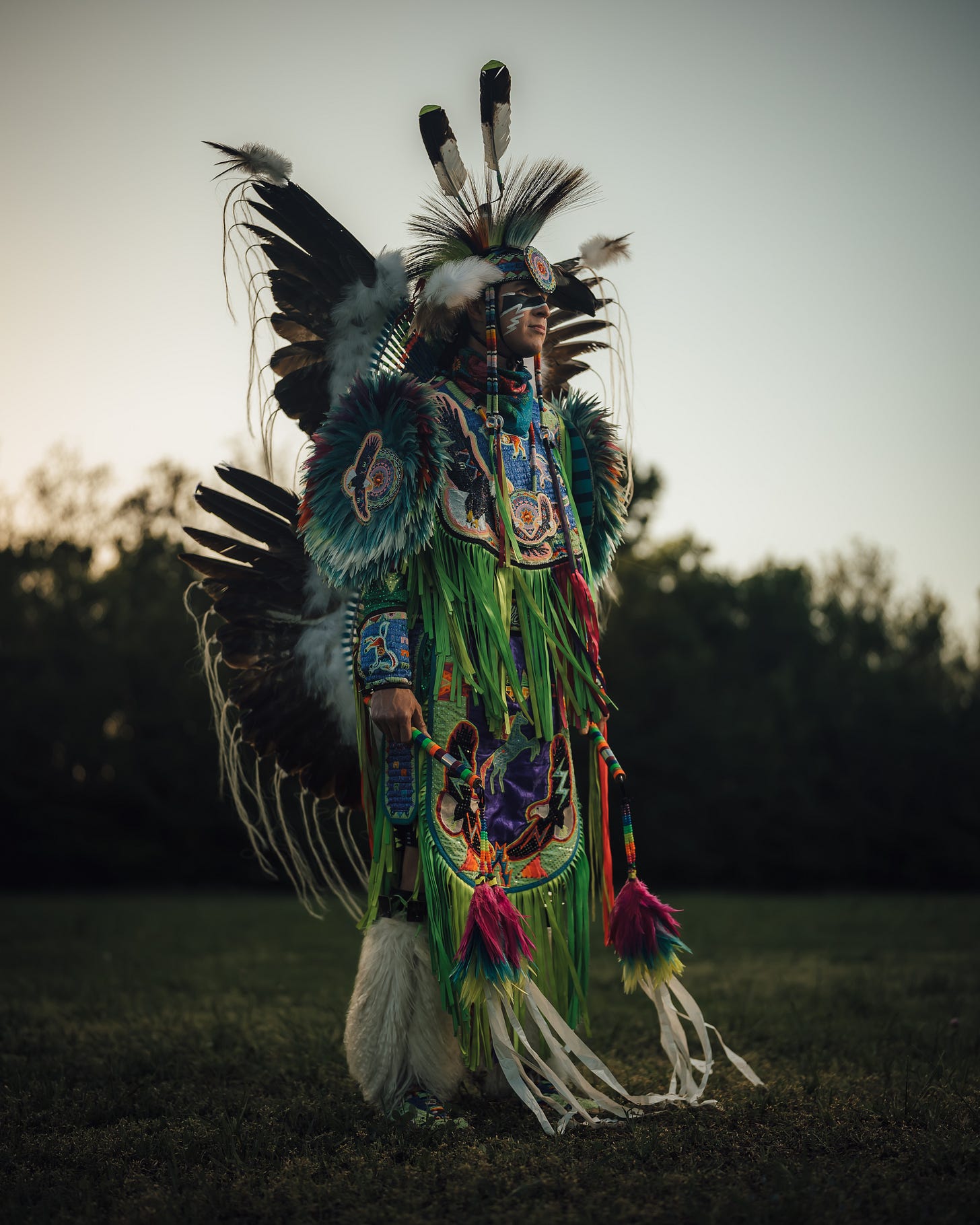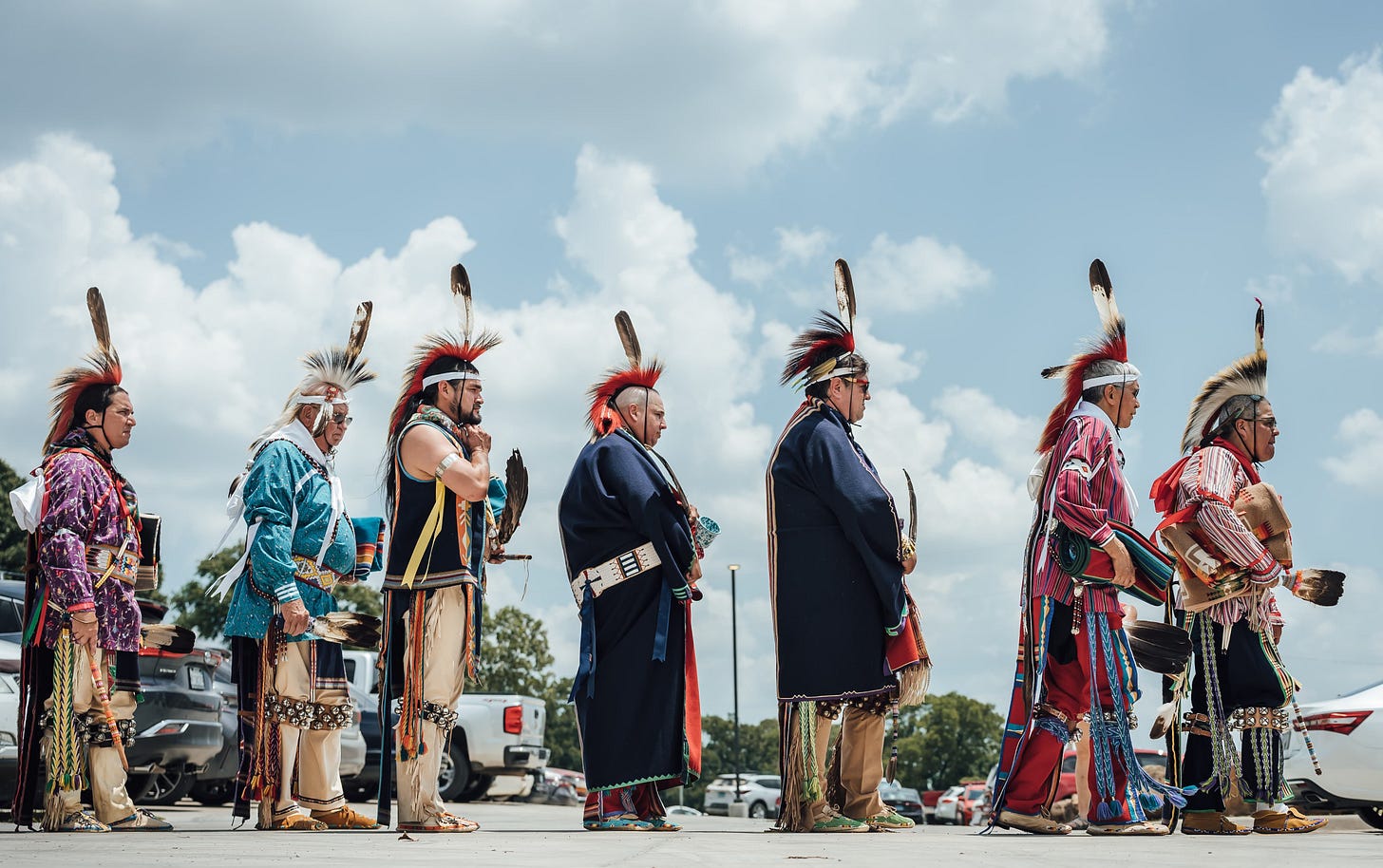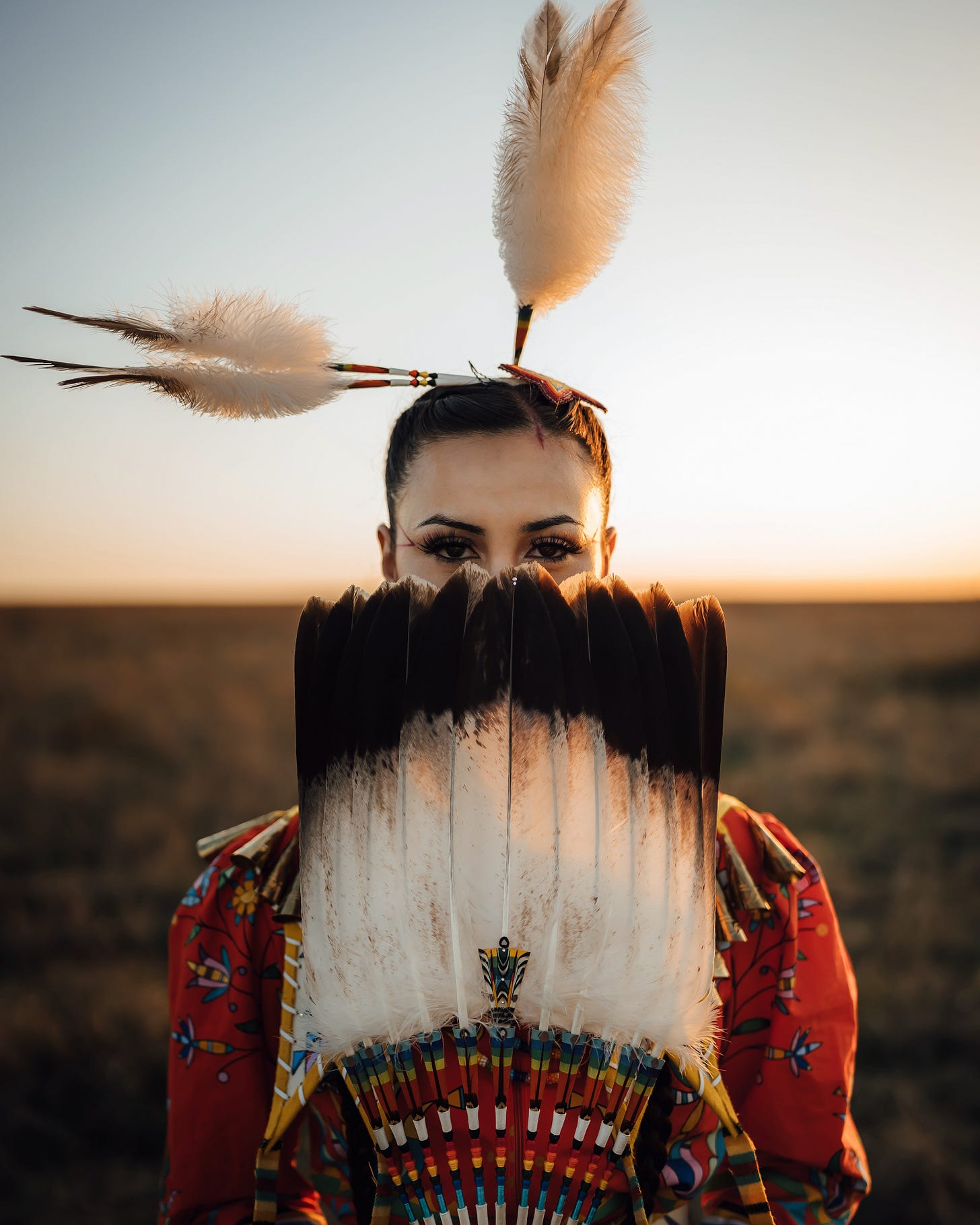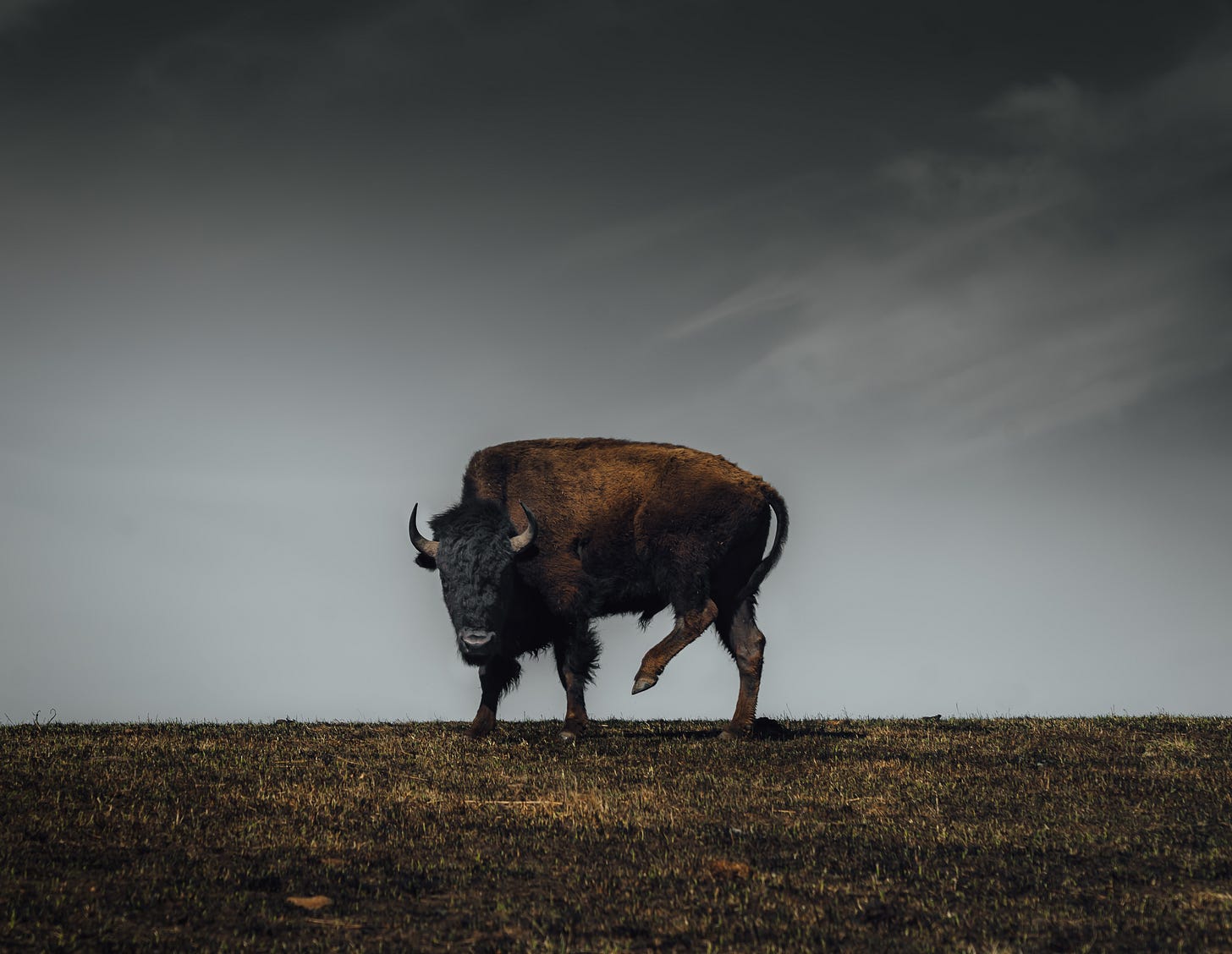The Truth in Frame
Cherokee filmmaker and photographer Cody Hammer reclaims the Indigenous gaze, transforming storytelling into an act of truth, respect, and remembrance
When Cherokee photographer and filmmaker Cody Hammer raises his camera, it’s never just to snap a photo. It’s to tell a story as it truly is, not as others have long chosen to see it. His work is both personal and collective, weaving together heritage, family, and the quiet power of representation. Through his lens, each image becomes a dialogue between worlds, one rooted in identity, memory, and the enduring, everlasting spirit of Indigenous storytelling.
Heritage & Identity
Q: Could you tell me about your tribal roots and how your community or family traditions have shaped the way you see the world?
A: I am a citizen of the Cherokee Nation. I see things as bigger than myself. Whatever I do, it’s for me and my family, but the bigger picture is that it’s representative of where I came from. When I take photos, I’m not taking them like they have been taken “for us,” not really seeing us. When I do it, it’s how we would want to see ourselves, or my interpretation of that. It’s a collaboration between me and the person I’m photographing. It’s about how we would like us to be seen.
Q: How does your Indigenous identity influence your creative process and storytelling?
A: There isn’t just one teaching that guides me. What leads me is respect, especially for the different tribal nations I work with. We aren’t the same. We have different ways and practices. Not everything is for everyone. Being respectful and seeing the beauty and importance in that difference matters.
Everyone sees differently. My vision is uniquely mine, as theirs is theirs. As Indigenous artists, it’s our responsibility to be truthful in our art. Individualizing it becomes easy once you recognize the importance of accuracy. It’s all intention. I want you to see the person and the importance of how they want to be seen. It’s not just pointing a camera at someone in buckskin and feathers.
Artistry & Storytelling
Q: Your work feels deeply personal yet universally resonant. How do you decide which stories to tell?
A: I decide by seeing and understanding the vision of the person or community I’m working with. My inspiration comes from lived experiences, not mysticism. Because I’m Native, the things that ground me, family, land, memories, responsibility, history are often labeled “spiritual.” But for me, it’s just life. I draw inspiration like anyone else, but because I am a Native man, those things might look different. Still based in reality. But our reality.
Q: Can you walk me through your creative process, from spark to finished piece?
A: It starts with an idea. I brainstorm how it could go, what works, what time of day, what subject, what gear. After doing this for so long, it’s instinct now. It’s hard to really put into words. It’s just how I move through the world.
Q: As both a photographer and filmmaker, how do those two mediums speak to or challenge each other in your practice?
A: They’re both important ways to tell stories, not in a cheesy or fake way. The vision is there, and I adapt with the movement in that moment. They’re different arms of the same body.
Q: What has been one of the most emotionally powerful moments behind the camera for you?
A: There have been many. Whether I feel it in the moment, when a project is completed, or even later when someone passes. I feel it every time I film my daughters spending time together. When I’m at my wife’s ceremonial dances and see everyone getting ready or walking in. Or during an art project where my wife and youngest daughter are the subjects, empowering Native women in communities.
It’s everything. They are why I started this journey, from teaching myself how a camera worked, to having the support and courage to be brave in my art, to speak up for what’s right, to be a good person. They push me to do more and give more.
Honestly, I wish I had captured moments with my grandpa. I wasn’t taking pictures when he was alive. Now, when I photograph families, those moments remind me of what I missed and what I can help others hold onto.
Family & Legacy
Q: What role has your family played in your artistic journey?
A: Everything. My wife and daughters are my biggest inspiration and my grounding force. Capturing meaningful moments that are bigger than myself, that’s where the emotion lives.
Q: What do you hope future generations, especially Indigenous youth, take from your work?
A: I want them to see someone who looks like them behind the camera, creating our way. A truthful way. I want them to see beyond a world that wants to forget them.
I want our youth to know they don’t have to be the loudest person in the room to make a difference. Let their art be loud for them.
Human Reflections
Q: What keeps you grounded when the creative or emotional weight feels heavy?
A: Knowing I’m doing something important and bigger than myself. Native people are community people. Knowing that my work is for my community and my family keeps me solid. Being with my wife and kids, being home with them, that’s what keeps me grounded.
Q: How has your relationship to place, land, and community evolved through your art?
A: I live in a community that isn’t my tribal nation but my wife’s. Being able to capture moments for her people has deepened my understanding of why this work matters. The respect and effort I’ve shown to her community has changed how I approach all my shoots.
Q: What does success look like to you now, compared to when you started?
A: Success to me isn’t what people usually think. From the beginning, I just wanted to create something meaningful. Nothing feels better than knowing I’ve made a positive impact on how Indigenous people are seen and hopefully, more understood and respected.
Q: If you could tell your younger self one thing about art, identity, or resilience, what would it be?
A: Your parents were right, you are meant for more. You were right to feel artistic because you are. You just haven’t found what feels right to you yet. Your family will be behind you the entire way and a woman, who will become your wife, will believe in you and be your model whenever you need to practice. And you’ll have four amazing daughters who couldn’t be prouder of you.
A Living Lens
For Cody Hammer, art is not a performance, it is a promise. Each image he creates is an act of remembering, of honoring, of seeing beyond the stereotype into truth. His camera doesn’t just document people, it listens to them. It lets them define how they wish to be seen. Something they have rarely been afforded.
In every frame, there is a heartbeat, of family, a legacy, people still here, still creating, and still living their truth. Through his lens, Cody reminds us that storytelling is not only about the stories we tell, but the way we capture them and choose to see them.
Keep up with Cody Hammer by visiting his Instagram or Threads!
All photos provided courtesy of Cody Hammer.
Edited by Lilli Eve



